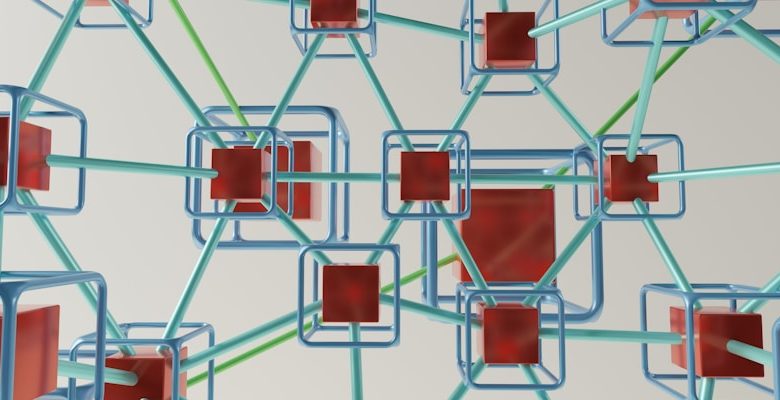The Rise of Interoperability: Bridging Different Blockchain Networks

- Understanding the concept of interoperability in blockchain technology
- Challenges and opportunities of connecting various blockchain networks
- Exploring the benefits of seamless communication between different blockchains
- Interoperability as a key factor in the evolution of decentralized systems
- How cross-chain transactions are revolutionizing the blockchain industry
- The future of blockchain interoperability: trends and developments
Understanding the concept of interoperability in blockchain technology
Interoperability in blockchain technology refers to the ability of different blockchain networks to communicate and share data with each other. It is essential for the seamless operation of decentralized applications and the overall growth of the blockchain ecosystem. By enabling various blockchains to work together, interoperability allows for increased scalability, efficiency, and innovation in the industry.
One of the main challenges in achieving interoperability is the lack of standardization among different blockchain protocols. Each blockchain network may have its own set of rules and requirements, making it difficult for them to interact with each other. To address this issue, developers are working on building bridges and protocols that can facilitate cross-chain communication and data transfer.
Interoperability also plays a crucial role in enabling the exchange of assets and information across multiple blockchains. This can open up new opportunities for users and businesses to leverage the unique features of different blockchain networks. For example, a decentralized finance application built on one blockchain could access liquidity from another blockchain through interoperability solutions.
Overall, interoperability is key to unlocking the full potential of blockchain technology and driving the mass adoption of decentralized applications. As the blockchain industry continues to evolve, the development of interoperability standards and protocols will be essential for creating a more connected and efficient ecosystem.
Challenges and opportunities of connecting various blockchain networks
One of the major challenges in connecting various blockchain networks is the lack of standardization. Each blockchain network operates on its own set of protocols and consensus mechanisms, making it difficult for them to communicate with one another seamlessly. This lack of interoperability hinders the potential for widespread adoption and collaboration among different blockchain networks.
On the other hand, the opportunities presented by connecting various blockchain networks are vast. By bridging these networks, developers and users can tap into a larger pool of resources and functionalities. This can lead to the creation of more robust and versatile decentralized applications, smart contracts, and other blockchain-based solutions that can address a wider range of use cases.
To overcome the challenges and maximize the opportunities of connecting various blockchain networks, industry players are actively working on developing interoperability solutions. These solutions aim to establish common standards and protocols that enable different blockchain networks to communicate with one another effectively. Some of the approaches being explored include sidechains, cross-chain atomic swaps, and interoperability protocols like Polkadot and Cosmos.
By fostering interoperability among different blockchain networks, the industry can unlock new possibilities for innovation and collaboration. This will not only benefit developers and users by providing them with more tools and resources to work with but also contribute to the overall growth and maturity of the blockchain ecosystem. As the technology continues to evolve, the importance of interoperability will only become more pronounced, paving the way for a more connected and interoperable blockchain landscape.
Exploring the benefits of seamless communication between different blockchains
One of the key advantages of seamless communication between different blockchains is the ability to enhance scalability. By allowing different blockchain networks to interact and share information, transactions can be processed more efficiently and at a faster pace. This can help alleviate some of the scalability issues that have been plaguing individual blockchains, allowing for a smoother and more seamless user experience.
Furthermore, interoperability can also improve the overall security of blockchain networks. By enabling different blockchains to communicate with each other, it becomes easier to verify transactions and ensure that they are valid. This can help reduce the risk of fraud and hacking, making blockchain networks more secure and trustworthy.
Another benefit of seamless communication between different blockchains is increased flexibility. Users are no longer limited to one specific blockchain network, but can instead take advantage of multiple networks simultaneously. This can open up new opportunities for innovation and collaboration, leading to the development of new applications and use cases that were previously not possible.
Interoperability as a key factor in the evolution of decentralized systems
Interoperability is a crucial factor in the advancement of decentralized systems, enabling different blockchain networks to communicate and interact seamlessly with each other. This seamless communication is essential for the growth and scalability of the blockchain ecosystem, allowing for the exchange of assets, data, and information across various platforms.
By promoting interoperability, blockchain networks can overcome the challenges of fragmentation and siloed information, creating a more connected and efficient ecosystem. This interconnectedness opens up new opportunities for collaboration, innovation, and the development of decentralized applications that can leverage the strengths of multiple networks.
Furthermore, interoperability enhances the overall security and reliability of decentralized systems by enabling cross-chain transactions and data transfers. This means that users can confidently engage with different blockchain networks without worrying about compatibility issues or security vulnerabilities.
In conclusion, interoperability acts as a catalyst for the evolution of decentralized systems, driving innovation, collaboration, and growth within the blockchain space. As the landscape of blockchain technology continues to expand, interoperability will play an increasingly vital role in bridging different networks and unlocking the full potential of decentralized applications.
How cross-chain transactions are revolutionizing the blockchain industry
Cross-chain transactions are transforming the blockchain industry by enabling seamless interactions between different blockchain networks. This interoperability allows users to transfer assets or data across multiple blockchains, enhancing the overall efficiency and functionality of the ecosystem.
One of the key benefits of cross-chain transactions is the increased liquidity and accessibility it provides to users. By bridging different blockchain networks, individuals can easily exchange assets or tokens without the need for intermediaries, reducing transaction costs and time delays.
Moreover, cross-chain transactions promote collaboration and innovation within the blockchain space. Developers can leverage the interconnected nature of different blockchains to build decentralized applications (dApps) that offer new functionalities and use cases, driving the adoption and growth of the industry.
Overall, the rise of interoperability through cross-chain transactions is revolutionizing the blockchain industry by breaking down barriers between disparate networks and enabling a more connected and efficient ecosystem for users and developers alike.
The future of blockchain interoperability: trends and developments
Blockchain interoperability is a crucial aspect of the future of decentralized technology. As different blockchain networks continue to evolve and expand, the need for seamless communication and collaboration between them becomes increasingly important. Several trends and developments are shaping the landscape of blockchain interoperability, paving the way for a more connected and efficient ecosystem.
One of the key trends in blockchain interoperability is the rise of cross-chain communication protocols. These protocols enable different blockchain networks to exchange data and assets in a secure and trustless manner. Projects like Polkadot, Cosmos, and Aion are leading the way in developing innovative solutions for cross-chain interoperability, allowing users to interact with multiple blockchains seamlessly.
Another important development in blockchain interoperability is the emergence of interoperability standards. Standards like the Interoperability Protocol (IOP) and the Blockchain Interoperability Alliance (BIA) are helping to define common protocols and guidelines for interoperability between different blockchain networks. By establishing these standards, the industry is moving towards a more unified and interconnected blockchain ecosystem.
Moreover, the concept of blockchain bridges is gaining traction as a way to facilitate interoperability between disparate blockchain networks. Bridges act as connectors that enable the transfer of assets and data between different blockchains, opening up new possibilities for cross-chain interactions. Projects such as Chainlink and Ren are actively working on building bridges that enhance the interoperability of blockchain networks.
Overall, the future of blockchain interoperability looks promising, with ongoing efforts to enhance connectivity and collaboration between different blockchain networks. By embracing cross-chain communication protocols, interoperability standards, and blockchain bridges, the industry is moving towards a more interconnected and efficient decentralized ecosystem. As blockchain technology continues to evolve, interoperability will play a crucial role in shaping the future of decentralized applications and services.



